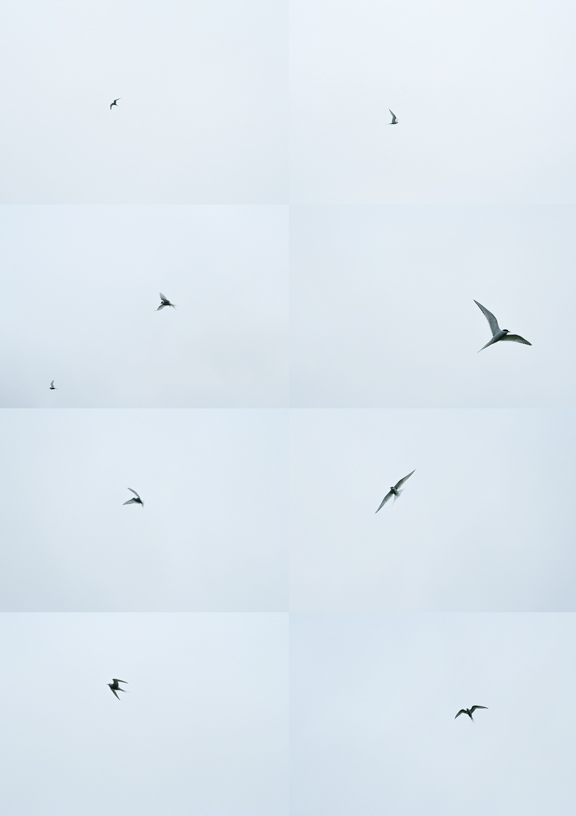
Circum/bi/polar 1 (Arctic Tern), 2013; archival Inkjet print; 79.3 × 56 inches.
Circum/bi/polar
Text by Alma Ruiz
In 2010 Rebeca Méndez traveled to Longyearbyen, the largest city on the Norwegian island of Spitsbergen in the Svalbard archipelago to join a group of international artists, scientists, architects, and educators in an Arctic expedition. Participating in a three-week residency program aboard the Noorderlicht, a two-masted ice-class sailing vessel, the group collectively explored one of the most remote and unusual places on earth. It was organized by The Arctic Circle, an annual expeditionary residency program, which is designed to support individual professional growth and collaborative projects in the form of exhibitions and education opportunities.
Among the several locations the participants visited is the research village of Ny-Ålesund. Scientists from Norway, the Netherlands, Germany, the United Kingdom, France, India, Italy, Japan, South Korea, and China come to work in Ny-Ålesund, where they remain for one to two years before they return to their respective countries. They journey back and forth dozens of times in the course of their scientific investigations, establishing a periodic migratory pattern not unlike that of many animals and birds.
Méndez had initially heard about the Arctic Tern from her husband, Adam Eeuwens, who had spotted it while living in Iceland; she finally got to see the bird herself in 2006 during a residency there. It was during her visit to the Norwegian island that she became reacquainted with this unusual creature and its migratory existence. Traversing the globe from north to south and back, the Arctic Tern, a bird in the family Sternidae, is the avian version of a tireless migrant. Its medium-size frame effectively conceals its almost unnatural stamina: once a year an inner force compels the bird to follow a circumpolar route totaling 44,300 miles. It flies from the North Pole, over the west coast of Africa and the east coast of Brazil, and arrives in the South Pole, where it settles down for the winter. With the arrival of spring, the Arctic Tern responds to an internal call of nature that prompts it to retrace its journey back to the North Pole. Catching the trade winds north of the Equator, it will arrive at its destination in the month of June in time to nest. The Arctic Tern’s migratory pattern will be repeated every year during its life span of approximately thirty years.
Méndez’s incipient interest in the life and migratory habits of the Arctic Tern translated into a poster she designed in collaboration with her husband for Mexico’s 11th edition of the International Biennial of the Poster in 2010. Seeing the Arctic Tern again in Ny-Ålesund gave the artist the impetus she needed to commence a project that would help her understand what she refers to as “the edges of the world” (remote, extreme, and often precariously fragile environments) and their relationship to our lives. Pairing her own experience during The Arctic Circle residency with her observations about human and animal migration, Méndez has created Circum/bi/polar, which is included in the C.O.L.A. exhibition.
Circum/bi/polar consists of a group of photographs of varying sizes and a projected video. The 30-by-44-inch photographs depict various aspects of the research village at Ny-Ålesund, including images showing the scientists at work as well as the surrounding Arctic landscape; the two 60-by-44-inch photographs show the Arctic Tern in flight as well as a map upon which the artist graphically traces the bird’s migratory patterns as well as the travel patterns of the researchers. The video spotlights a journey the artist undertook to a remote location on the island where, in the midst of a blizzard, she attempted to plant the Mexican flag. Carrying out an act that the Spanish conquerors would routinely conduct when they arrived at a new post in the New World, Méndez, a Mexican citizen, tries to claim this inhospitable land on behalf of her birth country. Transformed into a tiny black speck on an immense white landscape, the artist struggles to accomplish her mission until the intense winds tear the flag away from her hands, wholly frustrating her plans: she ultimately accepts the futility of her act and opts to walk away.
Circum/bi/polar is a visual study of the understanding of human existence and its interconnection with the earth, as well as an attempt to come to terms with this relationship. According to Méndez, her expedition to the polar region has sensitized her to see the world in more precise ways than ever before: observing the Arctic Tern’s behavior has sharpened her awareness not only of life’s vulnerability, but also of the ability of living creatures to triumph over extreme circumstances. By taking the Arctic Tern as the subject of an ongoing art project, Méndez aims to draw parallels between her own life and the life of this particular bird. Circum/bi/polar is one more step in this direction.

Ny Ålesund Arctic Research Station 1, 2013; archival Inkjet print; 32 × 48 inches.
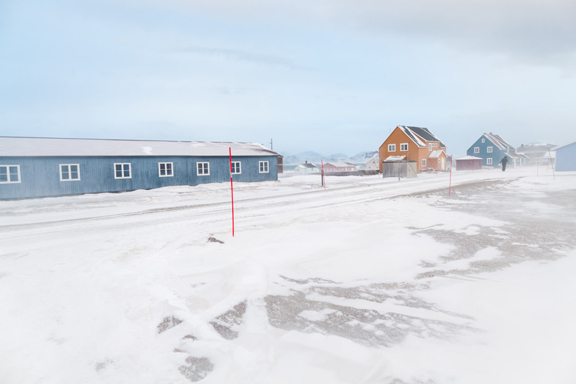
Ny Ålesund Arctic Research Station 2, 2013; archival Inkjet print; 32 × 48 inches.
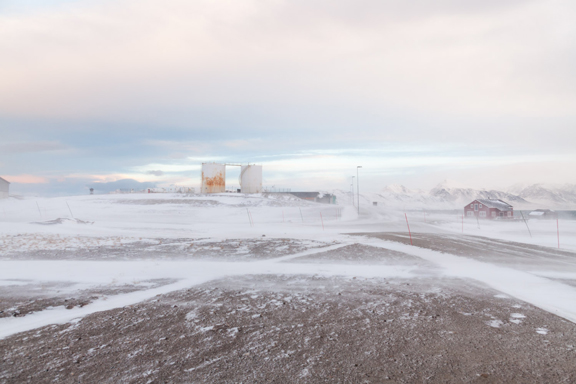
Ny Ålesund Arctic Research Station 3, 2013; archival Inkjet print; 32 × 48 inches.

80° 01’ 00” N, 2013; archival Inkjet print; 32 × 48 inches.

Virgohamna 1, 2013; archival Inkjet print; 32 × 48 inches.

Arctic Sea 1, 2013; archival Inkjet print; 32 × 48 inches.
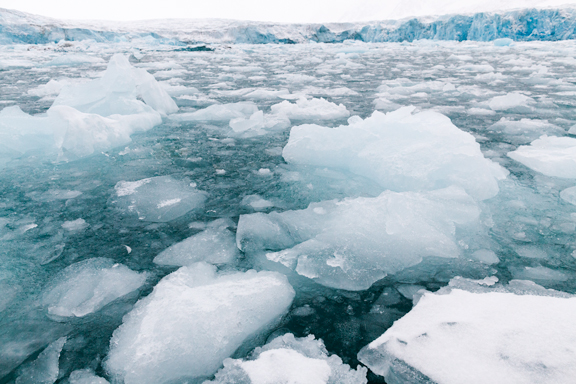
Glacier Ice 1 (Monacobreen), 2013; archival Inkjet print; 32 × 48 inches.
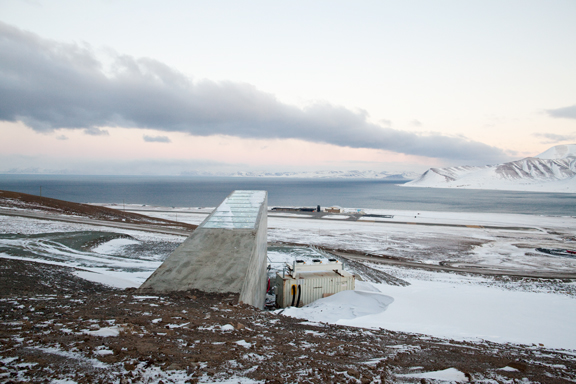
Svalbard Global Seed Vault 1, 2014; archival Inkjet print; 32 × 48 inches.

Automatic Weather Station 1, Langjökull, Iceland, 2014; archival inkjet print; 32 × 48 in.

El Norte, Abandoned, Svalbard, 2014; archival Inkjet print; 32 × 48 inches.
Exhibition History:
C.O.L.A. 2013, Los Angeles Municipal Art Gallery, Los Angeles, California, May 19–July 20, 2013, curated by Scott Canty.
Works exhibited from series: 80° 01’ 00” N, 2013, Glacier Ice 1 (Monacobreen), Ny Ålesund Arctic Research Station 1, Ny Ålesund Arctic Research Station 3, Virgohamna 1, Arctic Sea 1.